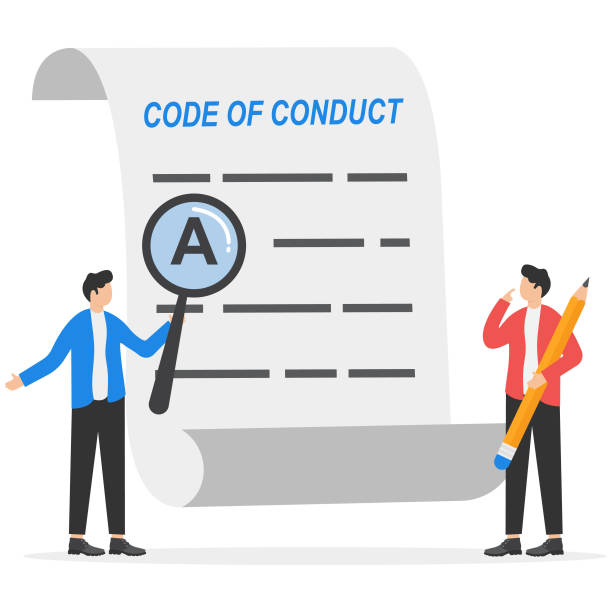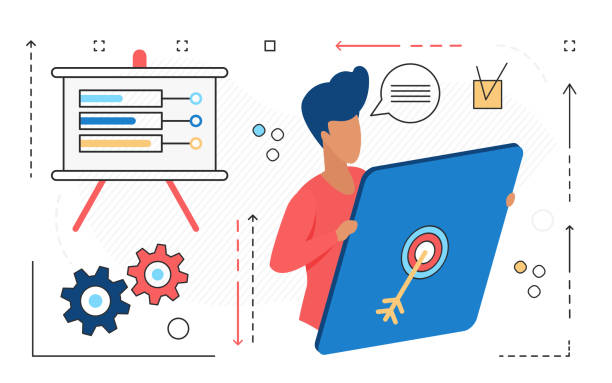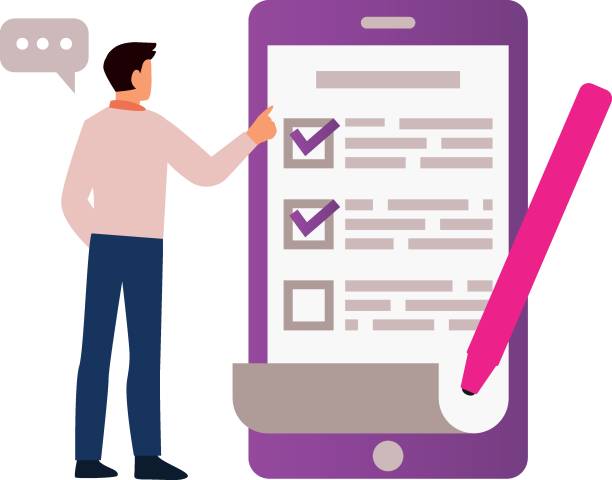Introduction to the Multilingual Web World and Multilingual Website Design

In today’s interconnected world, geographical boundaries hold less meaning for businesses.
However, one of the biggest obstacles in reaching international audiences is linguistic and cultural differences.
This is where the concept of #Multilingual_Website_Design becomes vitally important.
A multilingual website is a gateway to new markets and countless opportunities, allowing businesses to convey their message in the native language of potential customers worldwide.
This approach not only increases accessibility but also builds deeper trust and connection with the audience. With the expansion of the World Wide Web, the ability to communicate with users in their own language is no longer just a competitive advantage, but a necessity.
This chapter provides an overview of why and how multilingual website design is needed, from the importance of localization beyond simple translation to its impact on brand perception and customer loyalty.
We will learn how this process can lead to a seamless user experience for visitors from every corner of the world and how companies can effectively expand their online presence through this capability.
This is a key step for any business towards globalization and achieving its full potential in the digital space.
Disappointed with your e-commerce site’s low conversion rate? Rasaweb transforms your e-commerce site into a powerful tool for attracting and converting customers!
✅ Significant increase in visitor-to-buyer conversion rate
✅ Unparalleled user experience to boost customer satisfaction and loyalty⚡ Get free consultation from Rasaweb!
Countless Benefits of Multilingual Website Design for Modern Businesses

A multilingual website design is more than a technical project; it’s a powerful strategy for global growth and expansion.
By providing content in different languages, you can access new markets that were previously inaccessible to you.
For instance, if your target audience is in Europe, an English-language website is not enough; German, French, or Spanish users prefer to receive content in their own language.
This approach leads to increased website traffic, improved conversion rates, and ultimately, sales growth. When users can easily find the information they need in their native language, they are more likely to convert into customers.
Furthermore, a multilingual site significantly enhances your brand’s credibility and standing internationally.
It demonstrates your respect for different cultures and languages, fostering a sense of trust and loyalty among global customers.
From an SEO (Search Engine Optimization) perspective, multilingual website design can improve your ranking in search results for various keywords in different languages, putting you ahead in global competition.
This investment not only yields short-term returns but also provides a solid foundation for future successes in international markets.
Challenges Ahead in Designing and Developing a Multilingual Site

Although the benefits of multilingual website design are numerous, its implementation is not without challenges.
The first and perhaps most important challenge is content management and the process of accurate and high-quality translation.
Simply translating words is not enough; content must be localized to be culturally appropriate and appealing.
Choosing a suitable Content Management System (CMS) that fully supports multilingual capabilities is crucial.
Another challenge relates to the technical aspects of multilingual website design and international SEO, such as choosing the appropriate URL structure (subfolders, subdomains, or dedicated domains), correct use of hreflang tags, and managing duplicate content.
These technical issues can affect your website’s visibility in search engines.
Additionally, the discussion of User Experience (UX) for users from different cultures is also very important; from text direction (right-to-left or left-to-right) to units of measurement and cultural symbols, everything must be considered.
Ignoring these details can lead to a poor user experience and ultimately, lost customers.
Careful planning, selecting the right tools, and collaborating with language and SEO specialists are essential to overcome these challenges.
For a better understanding of these challenges and their solutions, refer to the table below:
| Challenge | Proposed Solution |
|---|---|
| Content and Translation Management | Use multilingual Content Management Systems (CMS) and automated/semi-automated translation processes. |
| International SEO | Implement hreflang tags, logical URL structure (subfolders, subdomains, or dedicated domains), local keyword research. |
| Different User Experience (UX) | Pay attention to text direction (RTL/LTR), currency, date, and various cultural symbols. |
| Development and Maintenance Costs | Careful budget planning, use of ready-made modules, and regular maintenance. |
URL Structure and Hreflang Implementation for International SEO

One of the most complex and vital aspects of multilingual website design from an international SEO perspective is choosing the appropriate URL structure and correctly implementing the hreflang tag.
There are three main options for URL structure: country code top-level domains (ccTLDs) like .de or .fr, subdirectories like example.com/fr, and subdomains like fr.example.com.
Each has its advantages and disadvantages and should be chosen based on business goals and available resources.
ccTLDs are excellent for demonstrating a strong presence in a specific country, but their management and SEO can be more costly. Subdirectories are generally simpler in terms of SEO and management, as all languages reside under one main domain.
The hreflang tag helps search engines like Google display the correct language version of your website to users in different geographical regions.
These tags prevent the display of duplicate content and optimize the user experience.
Incorrect implementation of hreflang can lead to serious SEO issues and render your efforts in multilingual website design ineffective.
Precise use of these tags requires technical knowledge and attention to detail to ensure that each language version correctly refers to its original version and is understandable to search engines.
This specialized section is the heart of multilingual SEO.
Tired of your company’s website not getting the visibility it deserves and losing potential customers? Solve this problem permanently with professional and effective website design by Rasaweb!
✅ Boost brand credibility and gain customer trust
✅ Attract targeted sales leads
⚡ Contact us now for a free consultation!
Efficient Content Management and Translation Process in Multilingual Sites

Content management and the translation process are among the most important steps in multilingual website design.
Simply translating words from one language to another is not enough; content must be localized to be culturally appropriate and appealing.
This includes adapting idioms, units of measurement, cultural references, and even images.
Choosing a Content Management System (CMS) that fully supports multilingual capabilities can greatly simplify the process. CMSs like WordPress with plugins such as WPML, or built-in modules in Drupal and Joomla, allow for managing content in various languages.
The translation process can be done internally by your team, or through professional translation agencies.
Using a translation agency can ensure quality and accuracy, as they are not only linguists but also familiar with cultural nuances.
Additionally, using Translation Memory and Computer-Assisted Translation (CAT tools) can help maintain consistency in terminology and reduce translation costs in the long run.
A comprehensive content strategy that considers the needs of each target market is vital for the success of your international website and should be considered in the early stages of multilingual website design.
This process must be dynamic and evolve with business growth, being updated and improved.
How Multilingual SEO Strategies Boost Your International Traffic

For your multilingual website design to be truly effective, you need strong multilingual SEO strategies.
Simply translating content is not enough; you must ensure that search engines can correctly index and rank the different language versions of your website.
This includes keyword research for each language and geographical region, as keywords may have different meanings or be searched with different phrases in various languages.
Optimizing title tags, meta descriptions, and URL addresses for each language is of paramount importance. Additionally, internal and external link-building for each language version must be carefully performed to increase site authority.
The use of hreflang tags, as mentioned earlier, plays a vital role in directing appropriate traffic to the correct language version of your website.
These tags prevent keyword cannibalization (internal competition) between language versions.
A multilingual website that is properly optimized for SEO can attract significant organic traffic from international markets and help you stand out in search results for users worldwide.
Continuous performance analysis and monitoring of rankings and traffic in each language allow you to adjust your strategies and achieve your maximum potential.
Unparalleled User Experience for Users from Different Cultures

When it comes to multilingual website design, beyond translating words, one must consider the User Experience (UX) for users from different cultures.
Have you ever thought about how an inappropriate language switcher or disregard for text direction can confuse a user? A truly multilingual website should create a sense of comfort and native feel for every visitor, without considering their native language. This means paying attention to details such as date and time formats, units of measurement, currency, and even colors and cultural symbols that may have different meanings in various cultures.
For example, the color red might symbolize love in one culture, while in another, it symbolizes danger.
Placing a clear and accessible language switcher on the website is the first step.
Also, ensuring that all interactive elements, from buttons to forms, are correctly translated and displayed in the appropriate direction (such as right-to-left for Persian) is very important.
Building a multilingual website means creating a digital environment where every user feels it was designed for them, not just translated.
This not only helps improve user satisfaction but also directly impacts conversion rates and customer loyalty.
Therefore, a deep understanding of the needs and expectations of international users is crucial for success.
For a better understanding of the key elements of an excellent multilingual UX, refer to the table below:
| UX Element | Importance Description |
|---|---|
| Language Switcher | Must be visible, accessible, and clear, usually in the header or footer. Do not use country flags alone. |
| Text Direction (RTL/LTR) | Full support for right-to-left (such as Persian and Arabic) and left-to-right languages. |
| Localized Content | Beyond mere word translation; includes adapting terminology, units of measurement, dates, and figures based on local culture. |
| Multilingual Customer Support | Provide support and answer user questions in their chosen language, including live chat or email. |
Choosing the Right Platform and Tools for Successful Multilingual Website Design

Choosing the right platform and tools is the cornerstone of a successful multilingual website design.
Today, numerous options, from Content Management Systems (CMS) to web development frameworks, offer multilingual capabilities.
WordPress, Drupal, and Joomla are among the most popular CMSs that, with the use of dedicated plugins or modules, provide the ability to create and manage multilingual content.
For example, WPML in WordPress is one of the most powerful tools for managing translations and multilingual content. In addition to CMS, Translation Management Systems (TMS) can also simplify the process of collaborating with translators and monitoring translation progress.
The choice of a platform should be determined based on your specific business needs, required scalability, and budget.
It should be noted that the chosen platform must provide international SEO capabilities well, such as support for hreflang tags and logical URLs.
Furthermore, the ability to integrate with other tools like web analytics tools and marketing platforms is also important.
Thorough research and investigation before the final selection will prevent future problems and additional costs and will greatly assist you in building an efficient international website.
These technical decisions will have a direct impact on the efficiency and long-term stability of your website.
Losing potential customers due to an unprofessional website? Rasaweb is your answer! With our specialized corporate website design services:
✅ Enhance your business’s credibility and standing
✅ Experience attracting more targeted customers
⚡ Act now to get a free consultation!
Continuous Maintenance and Updates of a Multilingual Site: Key to Stability and Success

After the completion and launch of multilingual website design, the work does not end; rather, a new phase of continuous maintenance and updates begins, which is crucial for long-term stability and success.
This process includes regular content updates, translation of new content, monitoring SEO performance in each language, and continuous review of user experience.
Web technology and search engine algorithms are constantly changing, so your multilingual website must also be updated in line with these changes. This includes security updates for CMS, plugins, and themes, as well as performance optimizations to ensure high loading speed in all languages and regions.
Listen carefully to feedback from international users and quickly resolve reported issues.
Review old content and, if necessary, update its translations.
Your international website should be a living entity that evolves with market needs and technology.
Neglecting maintenance can lead to security problems, reduced search engine rankings, and a poor user experience.
Investing in regular maintenance means protecting your initial investment in multilingual website design and ensuring its continued growth and success in global markets.
This is an ongoing commitment to providing the best experience to your audience worldwide.
The Future of Multilingual Website Design and Emerging Trends

The future of multilingual website design is rapidly evolving with technological advancements and changing user expectations.
One key trend is the use of Artificial Intelligence (AI) and Machine Learning (ML) to improve translation and localization processes. These technologies can help achieve more accurate, faster, and higher-quality translations, and are even capable of discerning subtle cultural differences in content.
Content personalization based on language, geographical region, and user behavior will also gain increasing importance, so that each user has a completely unique experience.
Other trends include optimizing websites for multilingual voice search and integration with voice assistants, which simplifies access to information for users worldwide.
Furthermore, it is expected that multilingual website design and content management tools will become smarter and more integrated to facilitate the development and maintenance of international sites for businesses.
On the other hand, with increasing attention to data privacy, ensuring compliance with international data laws (such as GDPR) in all language versions of the website will also be crucial.
Future international websites will not only be multilingual but also multicultural, intelligent, and highly personalized, to best meet the diverse needs of global users and establish their position in the digital world.
These developments bring new opportunities for growth and innovation in multilingual website design.
Frequently Asked Questions
| No. | Question | Answer |
|---|---|---|
| 1 | What is multilingual website design? | Multilingual website design means building a website whose content is available to users in several different languages. This is usually done through a simple user interface for language switching. |
| 2 | Why should we design a multilingual website? | Multilingual website design helps you reach a wider audience globally, provide a better user experience for international users, and improve your global SEO. |
| 3 | What are the main methods of implementing multilingualism on a website? | Main methods include using subdomains, subdirectories, or URL parameters for each language, and also using completely separate domains for each language. |
| 4 | Is using a subdirectory or subdomain better for SEO? | From an SEO perspective, both subdirectories and subdomains can be effective. However, many SEO experts prefer subdirectories due to better transfer of main domain authority. |
| 5 | What are important tips for translating multilingual website content? | Translation should be done by native speakers, content should be localized (localization) in addition to translation to match the target audience’s culture, and pure machine translation should be avoided. |
| 6 | What is the role of the hreflang tag in multilingual site SEO? | The hreflang tag helps search engines like Google display the correct language and regional version of a page to the appropriate users, which also prevents duplicate content issues. |
| 7 | Is it possible to make a website multilingual without coding? | Yes, in Content Management Systems (CMS) like WordPress, powerful plugins like WPML or Polylang exist that allow making a website multilingual without needing to code. |
| 8 | What are the challenges of multilingual website design? | Challenges include translation management, content localization, adhering to SEO principles for each language, technical support for different languages, and ensuring design consistency across different languages. |
| 9 | What is the difference between translation and localization? | Translation is merely rendering words from one language to another, while localization involves adapting content to the culture, customs, currency, date and time formats, and even appropriate colors for the target audience. |
| 10 | What is the best User Experience (UX) for language switching? | A clear and accessible language switcher (usually in the header or footer), using language names instead of flags (due to regional variations), and preserving the user’s position after changing language are important UX tips. |
And other services of Rasa Web Advertising Agency in the field of advertising
Smart Digital Branding: A combination of creativity and technology for online growth through attractive UI design.
Smart Sales Automation: A fast and efficient solution for online growth focusing on marketing automation.
Smart Advertorials: A professional solution for attracting customers with a focus on precise audience targeting.
Smart Direct Marketing: A fast and efficient solution for customer acquisition focusing on intelligent data analysis.
Smart Brand Identity: Revolutionize click-through rates with the help of intelligent data analysis.
And over a hundred other services in the field of internet advertising, advertising consultation, and organizational solutions
Internet Advertising | Advertising Strategy | Advertorial
Sources
Multilingual Website SEO Guide
Website Design for International Business
Global Expansion Strategy with Website
Multilingual SEO Tips in Digital Marketing
? With Rasaweb Afarin, transform your business in the digital world. From secure and professional website design to SEO and targeted content marketing, we offer comprehensive solutions for your success.
📍 Tehran, Mirdamad Street, next to Bank Markazi, Kazeroon Janoubi Alley, Ramin Alley, No. 6



